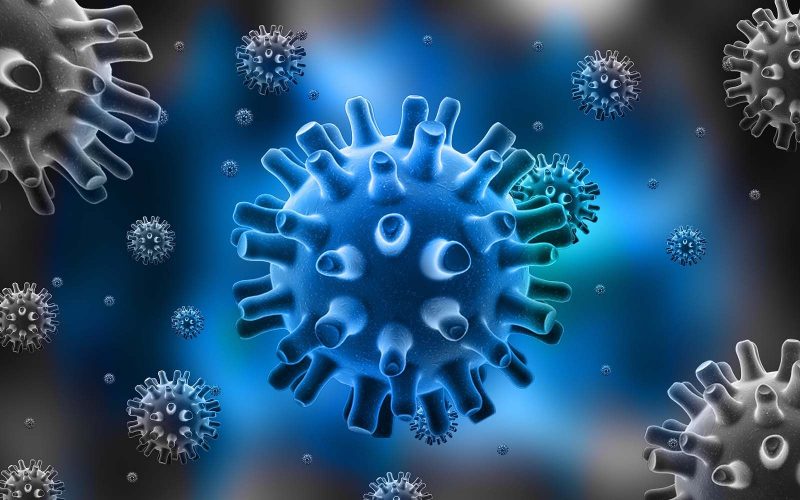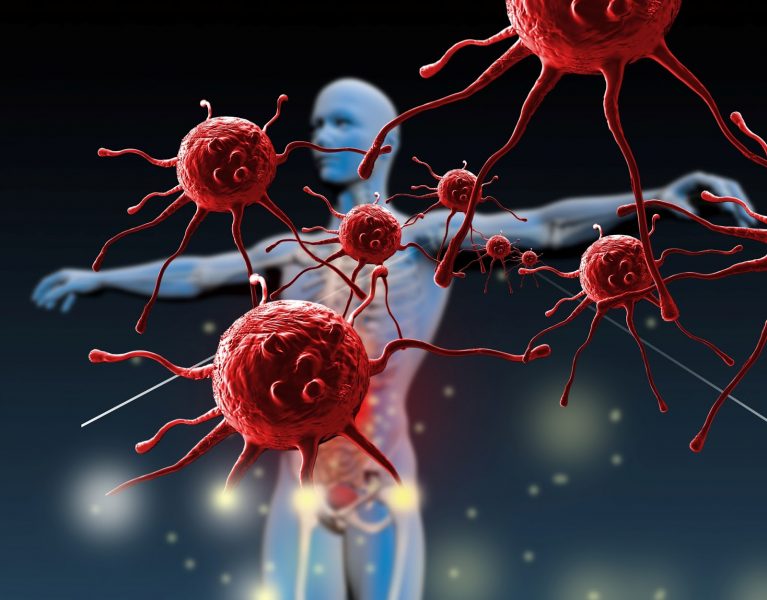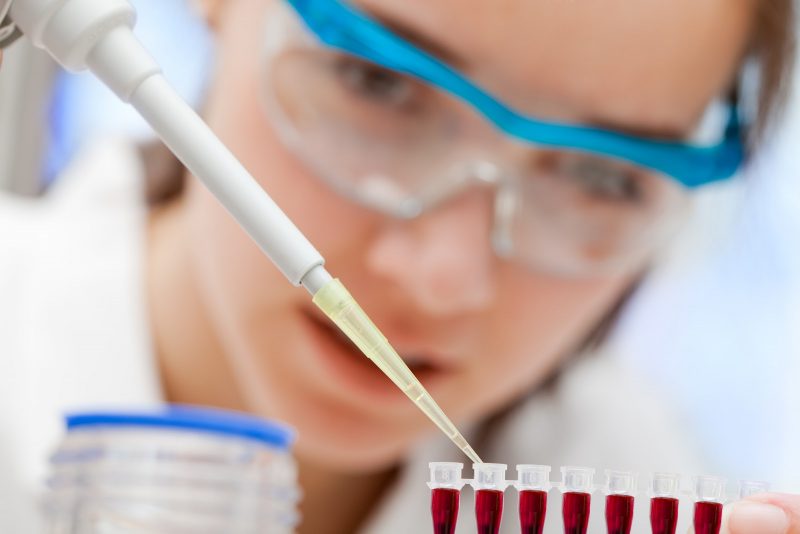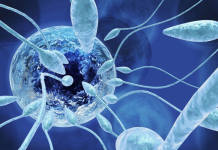It is not always possible to determine the danger posed by some diseases. A striking example is the Epstein-Barr virus. What is it, few know, although according to statistics, most adults on the planet are carriers of this infection, not even suspecting it.
Material Content:
Epstein-Barr Virus - General Features
In the group of latent infections, the Epstein-Barr virus occupies a special place - its pathogens can be found in almost every adult. At an early age, infection is less common - about 60% of children are already infected, the remaining 40% are likely to become carriers as well, reaching maturity.

This unsightly picture has developed not only due to the ability of the infection to rapidly transmit from person to person. One of the factors contributing to its spread is the asymptomatic course.
As a result of the fact that the symptoms of the Epstein-Barr virus in the chronic course are insignificant or completely absent, an infected person can carry the virus for many years, not knowing about his illness and involuntarily infecting others.
Description of the causative agent of the disease
Epstein-Barr virus is a representative of the fourth type of human herpes virus family. Diseases caused by the virus are characterized by damage to the body's lymphoretic and immune systems.In addition, this type of herpes virus is associated with the development of autoimmune diseases and tumor processes.
Viral particles - virions, are not capable of biological activity without the biomaterial of a living cell. Prior to contact with the cell, the virions are in the extracellular medium and exist independently.

In the process of infection, virions introduce their genome into the cell, take control of the division mechanism, and gain the ability to produce new viral particles by absorbing the nutrients of the cell nucleus membrane.
When new viral particles mature, they bud and exit into the intercellular space. Millions of newly created virions attack healthy cells. But the primary host cell does not die, but continues to proliferate by division.
The viral genome that controls the formation of new herpes virus particles is a double-stranded DNA molecule.
Prior to contact with the cell, the Epstein-Barr virus is enclosed in a protective membrane consisting of proteins. After infection of the cell, protein residues on its surface are affected by the immune system. From this episode, the transition of the disease to one of the forms begins - atypical erased (mild, chronic, asymptomatic), visceral, with simultaneous damage to many organs, or typical acute (infectious mononucleosis).
Epstein-Barr virus infection routes
The source of infectious pathology can be considered any person who is infected or has had the Epstein-Barr virus (carrier). The patient acquires the ability to infect other people at the end of the incubation period, which in different cases is from five to twenty days.
The main mechanisms of viral particles in the body:
- aerogenic (air). During a conversation, coughing or sneezing, viral particles enter the environment. Nearby people inhale infected air and become infected;
- contact household. Infection occurs by transmitting infected saliva to a healthy person during a kiss or when using dishes, toys, bedding, personal hygiene items of an infected person;
- transfusion - as a result of transfusion of infected donor blood or transplantation of donor organs of an infected person;
- transplacental - from mother to newborn;
- Alimentary - through the use of infected food and water.
Most often, close people and relatives become a source of infection. For this reason, patients do not pose a threat to their close circle.
A huge number of Epstein-Barr virus particles are in the saliva of an infected person - sometimes a kiss is enough to get infected.
What happens after an Epstein-Barr virus infection?
After the viral particles have penetrated the mouth or nose and fixed on the mucosa, they begin biological activity and quickly spread throughout the body through the blood.

Stages of infection:
- The main goal of virions is B-lymphocytes, cells of the immune system. Penetrating into B-lymphocytes, the virus promotes their reproduction, and thus increases the number of affected immune cells. Along with this, infection of T-lymphocytes, NK-cells and macrophages occurs. Integrating into the genome of the host cell, the virus causes chromosomal abnormalities;
- together with the affected cells, the infection spreads not only through the blood, but also through the lymphoid tissues, which causes a significant increase in lymph nodes. If the body's immune forces are not strong enough, various diseases occur. The active form of chronic infection provokes the development of mononucleosis, the generalized form contributes to damage to the liver, kidneys, heart, spleen and nervous system, the development of oncological and autoimmune processes;
- if the immune system is able to provide an adequate response, the viral particles go into a latent state, forming an erased form of infection.
By multiplying, the virus produces viral proteins that act on the immune response - they suppress T-cell immunity, as well as all stages of the antiviral defense of the body. In addition, viral particles are able to avoid exposure to antibodies, thereby exacerbating the level of immunodeficiency.
Herpes viruses effectively interact with the human immune system and persist in cells throughout life.
What diseases does the Epstein-Barr virus cause?
The activity of the pathogen occurs against a background of decreased immunity or factors contributing to this - stress, hypothermia, the use of immunosuppressants.
The acute form of the Epstein-Barr virus is expressed by the development of infectious mononucleosis.

Among other pathologies caused by infection:
- lymphogranulomatosis;
- lymphomas - Burkitt, CNS in patients with immunodeficiency syndrome;
- hepatitis;
- tumors of the nasopharynx and gastrointestinal tract;
- oral leukoplakia;
- immunodeficiency;
- anemia;
- chronic fatigue syndrome;
- damage to brain tissue (meningitis, encephalitis);
- post-transplant lymphoproliferative syndrome;
- nasopharyngeal carcinoma.
Epstein-Barr virus is not considered the cause of most diseases that occur with an infectious lesion, but is a factor that provokes their development.
Infectious mononucleosis
A viral disease that most often affects young children. It is characterized by a significant increase in temperature, a bilateral increase in lymph nodes, the appearance of tonsillitis, the development of stomatitis, an increase in the liver and spleen, and a change in the composition of the blood.
The incubation period is from 5 to 45 days. After recovery, the patient develops persistent lifelong immunity.
Burkitt's Lymphoma
Studies of biopsy materials obtained from tumors have shown the presence of a huge number of herpes virus particles. Having the property of stimulating the process of cell division, Epstein-Barr infection promotes the multiplication and spread of oncology in the body.

Burkitt’s lymphoma develops as a result of the action of viral particles on lymphoid cells. It is characterized by high malignancy, intensity of progress and damage to tissues outside the lymphatic system - bone marrow, cerebrospinal fluid, blood.
The accumulation of lymphoma cells provokes an increase in lymph nodes and the development of tumors in the abdominal organs. If untreated, death is inevitable.
What is the danger of the Epstein-Barr virus?
Viral infection of a person poses a serious danger to life, as it contributes to the development of severe forms of diseases, especially oncological ones. Predictions of most pathologies caused by damage are extremely dangerous.
Viral infection provokes the development of:
- upper airway obstruction;
- acute liver failure;
- malignant tumors;
- arthritis, polyarthralgia, monoarthritis;
- rheumatic diseases, vasculitis, colitis;
- secondary immunodeficiency;
- bacterial and fungal infections;
- damage to the central and peripheral system.
The long recurrent course of the Epstein-Barr virus contributes to the massive damage to vital organs and can cause human death.
Reasons for activating Epstein-Barr virus infection
In most cases, a viral infection is hidden. Viral particles hide in the cells of the nasopharynx or blood, and can remain in a dormant state for a long time. To activate the pathogen, certain conditions are necessary.

The main provoking factor is a decrease in immunity.This can happen as a result of stress and overwork, lack of physical activity, unbalanced diet, taking certain medications, sleep disturbances, exposure to bad habits and adverse environmental conditions.
The prognosis for the patient with the virus is determined not only by a number of external factors and the severity of the immune response, but also by the presence of other infections and surgical interventions that reduce the intensity of the body's defenses.
Symptoms and diagnosis
Most often, the Epstein-Barr virus disguises itself as other diseases.

An infected person may complain about:
- weakness and decreased performance;
- swollen lymph nodes or pain in them;
- myalgia and joint pain;
- irritability and tendency to depression;
- decreased appetite;
- slight periodic increase in temperature;
- sore throat.
Recognition of a latent infection is not possible without the use of laboratory diagnostic methods.
Blood test and other types of laboratory diagnostics
Using laboratory tests, it is possible to determine the DNA of the virus in B-lymphocytes and epithelial cells, as well as to assess the main indicators of the antiviral defense of the body.

General blood analysis.
It is necessary to detect characteristic changes in the plasma structure - leukocytosis, hemolytic anemia, lymphomonocytosis, thrombocytosis or thrombocytopenia, as well as establish ESR parameters.
Blood chemistry.
Allows:
- detect an increase in the level of transaminases, lactate dehydrogenase and other enzymes, which indicates liver damage;
- identify C-reactive proteins and fibrinogen, confirming cell damage and changes in biological parameters of blood.
Serological blood test.
An effective method for detecting antibodies to a viral pathogen:
- the presence of immunoglobulins M is a sign of the development of the acute phase in the first six months after infection or exacerbation of the chronic form;
- immunoglobulin G - an increase in indicators characteristic of an acute form or relapse. Low concentration indicates the development of a chronic form of infection.
A result in which antibody performance is higher than the established norm is considered positive.
PCR method.
An effective way to detect viral DNA in samples of biomaterials - saliva, smear from the mucous membrane, cerebrospinal fluid.
Ultrasound of internal organs allows you to evaluate their biological parameters and determine the presence of lesions.
If oncology is suspected, an additional diagnostic study is prescribed - a biopsy of damaged tissues.
Epstein-Barr Virus Treatment
General treatment regimens for infection do not exist. The method of treatment of the Epstein-Barr virus in adults will be determined based on the diagnostic results.
The most effective is considered an integrated approach to treatment, using drugs:
- inhibiting the reproduction of pathogens;
- stimulating natural defense and phagocytosis;
- blocking virions in the intercellular space;
- supporting functions of T cells;
- creating an antiviral state of healthy cells.
In the chronic form of pathology, the body is detoxified and antioxidants are prescribed. With a latent form of infection, outpatient or spa treatment is allowed.












